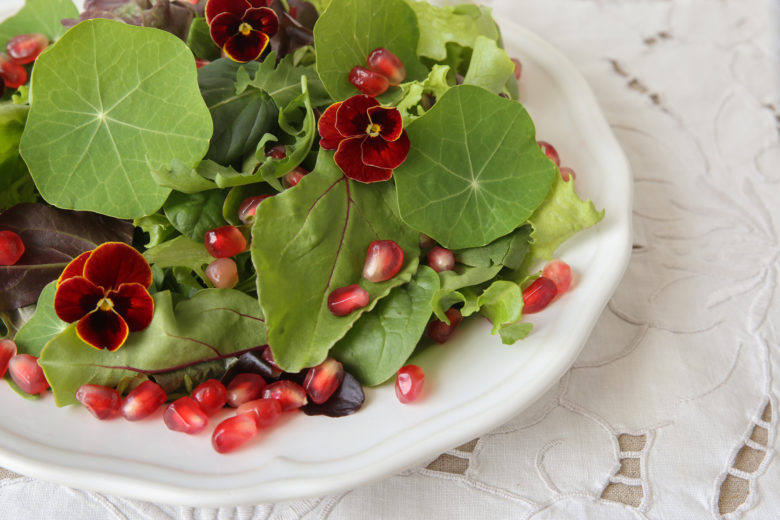
There’s a growing interest in wild foods. With edible weeds suited to thrive in nearly every environment across the country, to the trained eye, gastronomically exciting vegetation is abundant. Enter the burgeoning trend of food foraging. Its impetus is part epicurean (think sautéed fiddlehead ferns, stuffed nasturtium flowers and dandelion greens pesto) and part environmental.
These wild plants are largely drought-resistant — requiring no water beyond what nature provides — and are found in rural, suburban and urban locales alike, including food deserts.
The term “forage” may bring to mind mushroom hunting and its associated risks (mushrooms can be difficult to identify in the wild and can be toxic), but there are a number of other wild plants that are much easier to locate and identify. Some well-known varieties include dandelion (Taraxacum officinale) and sweet fennel (Foeniculum vulgare), while others may go unnoticed by the untrained eye, such as sow thistle (Sonchus oleraceus) and bristly ox-tongue (Helminthoteca echioides).
Unlike agricultural plants that, by definition, are cultivated and tended, wild edibles have had to survive entirely on their own — developing defense mechanisms that make them robust enough to endure harsh conditions. In fact, some of the very characteristics that make these plants prolific as “weeds” are why they are nutrient-dense and flavorful. Phytonutrients, bioactive compounds that protect plants from germs, fungi and other threats, may help reduce human risk of certain chronic diseases, such as diabetes, heart disease and cancer.
Is Foraging Safe?
While becoming an adept forager is not difficult, it does take time to become familiar with edible (and non-edible) wild plants. A great way to get started is to take a class with a local expert.
While online resources certainly can be helpful, face-to-face guidance is ideal because plant identification requires all of your senses — not just sight.
Because it is extremely important to never eat a wild plant unless you can identify it with absolute certainty, foragers discourage the use of common names alone in plant identification. After all, “Queen Anne’s Lace” may refer to either an edible wild carrot (Daucus carota) or poison hemlock (Conium maculatum) — not a mistake worth risking. Therefore, botanical names are included to eliminate potentially dangerous confusion.
Another common food safety concern centers on environmental toxins, particularly since some of the richest urban foraging territories are in industrialized areas. The Berkeley Open Source Food (a University of California, Berkeley, project) studies the bioaccumulation of heavy metals in wild edibles in urban East Bay food deserts. Research is ongoing, but so far, results have shown undetectable levels of pesticides and polychlorinated biphenyl, or PCBs, in six wild plant species — even when soils tested positive for certain metals.
Additionally, preliminary nutritional panels indicate these plants are high in fiber and vitamin A, with specific species displaying additional benefits. For example, a ½-cup sample of mallow (Malva sylvestris) contained 200 milligrams of calcium — even more than ½ cup of milk — making mallow an excellent source of this under-consumed nutrient.
And what about the “dog pee factor”? While it is true that man’s best friend may “water the plants” during a stroll, many organic crops are fertilized with animal manure and compost, while conventional farms use synthetic fertilizers and pesticide. In any case, whether your food is from farm or forage, it is advisable to wash plants before consumption.
Depending on where you live, the legalities of foraging may be confusing or vague. In many municipalities, the only truly legal place to forage is on your own private property or that of a willing neighbor. Yet many wild mushroom varieties are harvested from (often public) forests before being sold to markets, and restaurants that promote wild foods on their menus are generally left alone by government bodies.
In addition to respecting governmental regulations, it is important to be environmentally responsible when foraging by familiarizing yourself with natural habitats, focusing on invasive species and only harvesting noninvasive and/or protected species with nature conservation in mind.
When practiced responsibly, foraging can be a great activity for adults and kids alike — supporting an interest in different foods and encouraging physical activity. And wild foods offer a host of culinary possibilities, ![]() potentially offering an opportunity to help redefine the American plate.
potentially offering an opportunity to help redefine the American plate.






